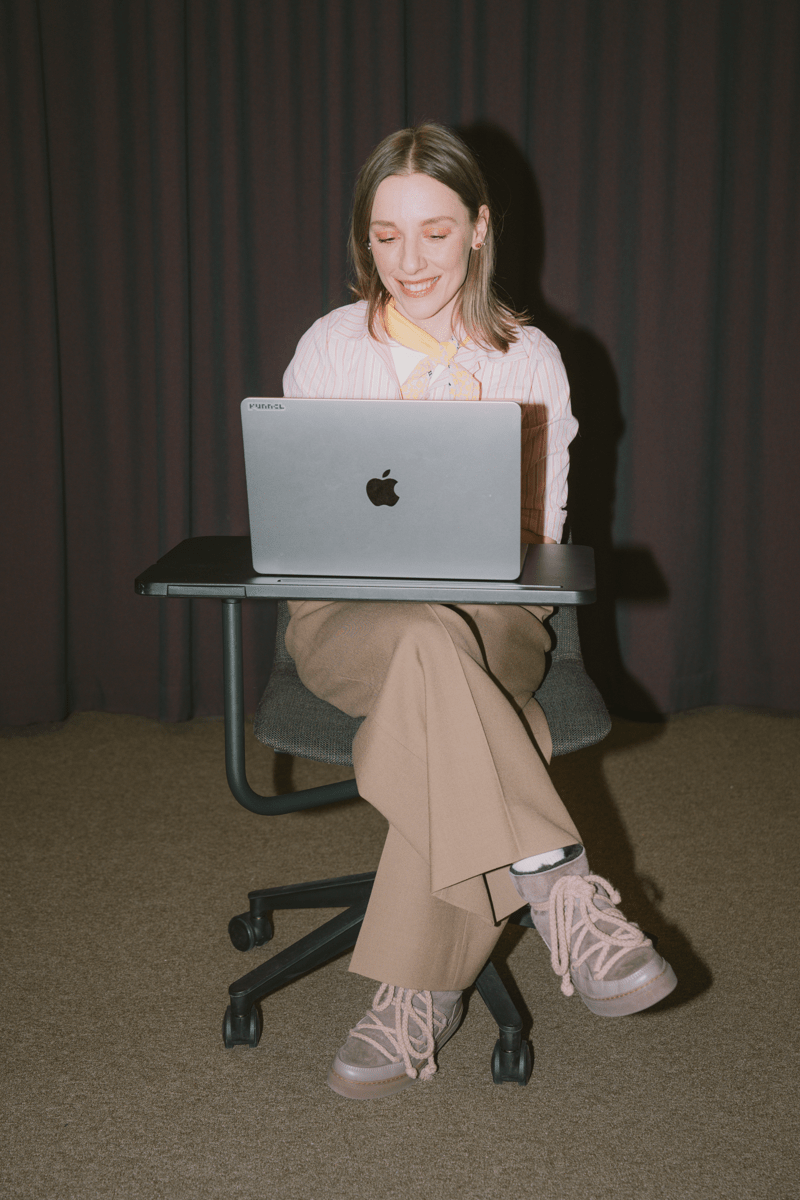

Elena on Product Design at Funnel: User Journeys and Experimentation
Elena’s path to product design began in documentary photography, where she captured human stories through visuals. Drawn to storytelling and user empathy, she transitioned into UX and product design. Since moving to Stockholm two years ago, she has shaped user journeys at Funnel, first in Acquisition and now in Activation. In this post, she shares insights into her path, the projects she’s most proud of, and how continuous discovery drives impact in her team.

Can you introduce yourself and your role at Funnel?
I am Elena, a Product Designer at Funnel. I am originally from North Macedonia, and my path into product design was not exactly traditional. I started as a documentary photographer, capturing people’s stories through visuals. While I loved the aesthetics of photography, what truly fascinated me was the human connection. Observing, empathizing, and earning people’s trust so they would open up in front of the camera. That same passion for storytelling and user empathy eventually led me to user experience and product design.
I moved to Stockholm, Sweden just over two years ago, and Funnel is my first job here. I started in the Acquisition team, part of the Marketing department, focusing on lead generation and new user growth. Later, I transitioned to the Activation team, part of Development, Product, and Design, where I now work on helping new users onboard and find value in Funnel as smoothly as possible. Our goal is to guide them through those crucial first interactions, making their journey intuitive and engaging while driving long-term growth for the business.
What does a day as a Product Designer look like?
No two days are the same, and that is what makes it exciting. But every day starts with a cup of coffee and a quick daily check-in, which always includes a fun, random question. After that, the real work begins, and it can take many different forms. Funnel thrives on collaboration, so brainstorming, co-creating, and running workshops across teams is a big part of my work. I also spend a lot of time talking to customers. We do weekly user interviews, gathering insights that help shape our decisions.
Beyond qualitative research, we also look at user behavior through data and session recordings, identifying patterns in how people interact with our product. Some days, I am deep in Figma, refining designs and building interaction patterns. Other days, I am analyzing experiment results, trying to decode what our latest test is telling us. The mix of creativity, research, and problem-solving keeps things dynamic and fun.
Can you share a project you’ve worked on that you’re particularly proud of?
One of the biggest challenges at Funnel is designing for users with different levels of data maturity. Advanced users want full control, while others need more guidance. Historically, onboarding and education relied heavily on customer-facing teams, but as part of our product-led approach, we wanted to make sure the product itself could guide users. To support this, we launched Views, pre-built reports that provide quick insights without complex setup. Each report answers a common business question using one simple table and one chart, making data easier to understand without overwhelming users.
This project was a huge learning experience. One key takeaway was understanding when less is more. We initially focused on small, digestible data sets to help users build understanding step by step but also realized that less is not always more when it comes to UI. Instead of hiding complexity behind a clean interface, we used progressive disclosure, letting users peek at raw data when needed. The feedback confirmed that simplicity and control can coexist.
What made this project particularly exciting was the iterative approach. Instead of spending weeks prototyping in Figma, we tested directly with real users and real data in the product. We ran daily experiments, gathering insights and adjusting quickly. This hands-on approach helped us validate ideas faster and reduce risk, making it one of the most rewarding projects I have worked on.
What’s next on your team’s product roadmap?
Instead of following a rigid roadmap, our team embraces continuous discovery, constantly running experiments and iterating based on what we learn. In a Growth team, there is no silver bullet, and real impact comes from many small improvements over time. Right now, our focus is on finding the right balance of friction in onboarding. The instinct is to remove as many steps as possible to get users to value quickly, but we have learned that sometimes, a little friction is good. If users rush through onboarding without understanding what is happening, they might not be able to use the product effectively later on.
Our goal is to help users become truly self-sufficient, giving them just the right level of guidance while keeping them in control. We are also experimenting with different onboarding paths for different user types, ensuring that people with varying levels of experience get a personalized experience that suits their needs.
Interested in working in our Development, Product & Design department? Read more here.

